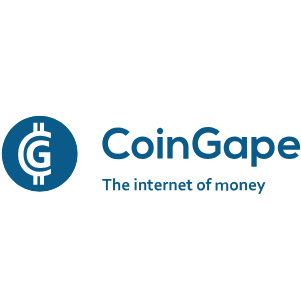Summary GBTC's conversion to an open-end fund eliminated its NAV discount, reducing its appeal compared to lower-cost Bitcoin ETFs with similar exposure. High management fees and significant tracking errors undermine GBTC's value proposition, making it less efficient for Bitcoin exposure. Competing Bitcoin ETFs, like those from BlackRock, offer similar exposure at a fraction of GBTC's cost, making them more attractive to investors. While bullish on Bitcoin, I don't think investors should be holding GBTC unless management significantly reduces fees to improve cost efficiency and net returns. Investment Thesis Grayscale Bitcoin Trust ETF ETF (GBTC)’s discount to Net Asset Value ((NAV)) has been a solid entry point for investors that wanted to get Bitcoin exposure without the complex logistics of directly holding the cryptocurrency. The discount, which was a result of GBTC’s previous closed-end structure, allowed investors to benefit as the fund converged on its NAV. GBTC’s shares often traded below their NAV. Earlier this year, GBTC converted from a closed-end fund to an open-end vehicle. This dissipated much of this NAV discount and narrowed the trading price’s difference between the value of the underlying Bitcoin holdings and the trading price. With the discount now gone, holding GBTC will depend on Bitcoin’s market performance and the fees of the underlying ETF. While there’s a bullish outlook on Bitcoin after the 2024 presidential election here in the US, there are cheaper ETF options that minimize the fees from owning the cryptocurrency through a custodian. Newer Bitcoin ETFs are now seen as strong alternatives, given their lower fees compared to GBTC. Given that there’s no discount-based advantage, and in light of its relatively high fees, I am downgrading my view on GBTC from a buy to hold. I don’t believe Bitcoin’s rally will slow anytime soon, but I believe GBTC no longer offers the most efficient vehicle for Bitcoin exposure. Investors are likely better off with lower-cost ETFs, which offer similar Bitcoin exposure without the premium fee structure. Why I'm Doing Follow-Up Coverage In my last article from May , I thought GBTC was a buy based on their rising AUM because the NAV discount has disappeared. With the recent structural changes at GBTC in the spring, the trust’s conversion to an open-ended fund has resulted in the NAV discount disappearing. While the adjustment has boosted liquidity and tax efficiency, it has simultaneously removed the discount-based incentive, and now has also removed some of the catchup demand which was the foundation of my previous buy. Bitcoin ETFs are competitive and this has also put pressure on GBTC’s fee structure. GBTC’s fees remain higher relative to other funds, and this will reduce returns over time unless something changes. With other Bitcoin ETFs (like BlackRock’s (IBIT)) now offering similar exposure with much lower fees, GBTC no longer makes sense. The purpose of this follow-up analysis is to show how GBTC’s market performance has shifted. There are now much more efficient alternatives available to investors who want Bitcoin exposure at lower costs in their traditional brokerage accounts. How GBTC Has Gotten Comparatively Worse Following former President Trump's win last week, Bitcoin’s price has surged to a record high of $88,000 as of the time of this writing, driving strong gains across Bitcoin-related ETFs. GBTC in particular is up 38.34% since the last time I wrote about it in May. The Trump administration is expected to create a highly favorable environment for cryptocurrencies here in the US, through supportive legislation and regulations. We’re really looking at accelerated institutional adoption in my opinion. Despite the strong performance in GBTC and the overall market optimism in Bitcoin, I actually believe the ETF has still lost much of its appeal, especially compared to newer Bitcoin ETFs that offer similar exposure at lower fees. GBTC's high management fee clocks in at 1.5% per year. This is a huge disadvantage. When we look at other Bitcoin ETFs, such as those introduced by major players like BlackRock annual fee structures typically come in below 0.25% per annum . Compared to GBTC, this means we can get Bitcoin exposure in a brokerage account at a fraction of the cost (less than 1/5th of the cost). GBTC’s Bitcoin Mini Trust which targets retail investors also comes with a lower sponsor’s fee of 0.15% , which shows why GBTC’s fee structure is problematic. The trust’s Bitcoin assets are also held by Coinbase Custody Trust Company to simplify the custody for investors who may not want to manage a digital wallet. The same product for lower fees? I am not sure how they plan to help their main fund win. After the trust’s launch in July, I just don’t understand what GBTC’s unique appeal is. The investment product has really fallen behind in terms of cost-effectiveness. Valuation GBTC’s high expense ratio and historical tracking error are a huge valuation challenge for investors who want to be long run involved with this fund. At the heart of this is the expense ratio of 1.50% per year that I mentioned before. This is clearly high for a fund whose goal is to track a single asset – Bitcoin. The fee structure is currently rated by Seeking Alpha at an F. Ouch. Keep in mind that the overall median expense ratio for ETFs is at only 0.49%, meaning this is a 206.12% premium investors are paying as a management fee on GBTC. Because the ETF tracks one core asset, high expenses are going to inevitably continue to reduce returns, particularly over the long term, really putting GBTC at a disadvantage relative to competing funds. The tracking error in GBTC further complicates their valuation appeal. Over a one-year period, GBTC has booked a tracking error of 56.58% , way higher than the 7.60% median for other ETFs, or a 644.96% difference. This is a huge deviation from Bitcoin’s actual performance. While some of this was the convergence to NAV as the fund restructured, this is still notable. Putting it together, I think a fund whose entire mandate is to mirror Bitcoin, this level of tracking error is alarming. The primary function of a single-asset fund is to provide direct exposure with minimal deviation, but GBTC’s metrics suggest alarming inefficiencies in achieving this goal. Given these structural issues, I think it is difficult to estimate the true value of GBTC. While high fees and tracking errors might be manageable in a multi-asset ETF with active management, they are hard to justify in a passively managed, single-asset trust. I believe the market has already shown (and will show again) a tendency to penalize such inefficiencies with a persistent NAV discount, which could resurface for GBTC if these problems remain unaddressed. With competing ETFs available at lower fees and with likely more consistent tracking, GBTC’s premium appears unsustainable. Bull Thesis Really, the biggest bull thesis is the prospect of GBTC slashing their management fees to something closer to the sector median. A fee reduction or, even more impactful, a complete elimination of management fees would increase the net returns for investors. I think this could alter the market’s perception of GBTC’s value. Removing fees would directly address one of GBTC’s primary drawbacks. If management fees were eliminated, GBTC could leverage their established brand to help regain appeal among institutional investors who prioritize cost-efficiency in crypto investments. This fee reduction is important in a single-asset fund like GBTC, where investors expect minimal costs for merely tracking a core asset. While investors themselves would not benefit from a rise in AUM for the ETF if it consolidated its fee structure, ETF holders would benefit from stronger long-run returns. Fees would be lower, individual returns would be inevitably higher. I don’t have any reason to refute this bull thesis. To be frank, if GBTC cut its fees down to 25 or 30 bps I could see myself upgrading this fund up to a strong buy. But what matters most is that investors pay lower fees to invest. We’re not yet seeing that. Takeaway GBTC once offered stock market investors a unique, valuable entry into Bitcoin through a publicly traded vehicle, often resulting in a NAV discount. However, with the NAV discount gone and competition rising from lower-cost Bitcoin ETFs, GBTC’s appeal has fallen off. High management fees remain the core issue, and tracking errors further impacts my valuation confidence. While I remain bullish on Bitcoin’s future, GBTC no longer provides the most efficient exposure to the asset. With this, other Bitcoin ETFs like the iShares Bitcoin Trust ETF ( IBIT ), which I recently covered, offer more cost-effective options. These funds provide similar exposure without the significant fee burden attached to GBTC and make them more attractive to cost-sensitive investors. As a result, I, personally, have shifted my belief in GBTC from a buy to a hold. Despite Bitcoin’s bullish outlook, I believe there are more efficient funds for investors to capture this growth with. GBTC’s high fees undermine their value proposition. As the market for Bitcoin ETFs grows, investors are likely to favor funds that balance exposure with minimal costs, which GBTC’s structure currently fails to achieve. For now, I am a hold on to shares. If management were to slash the fee structure, however, I would be interested in taking another look at the fund.














